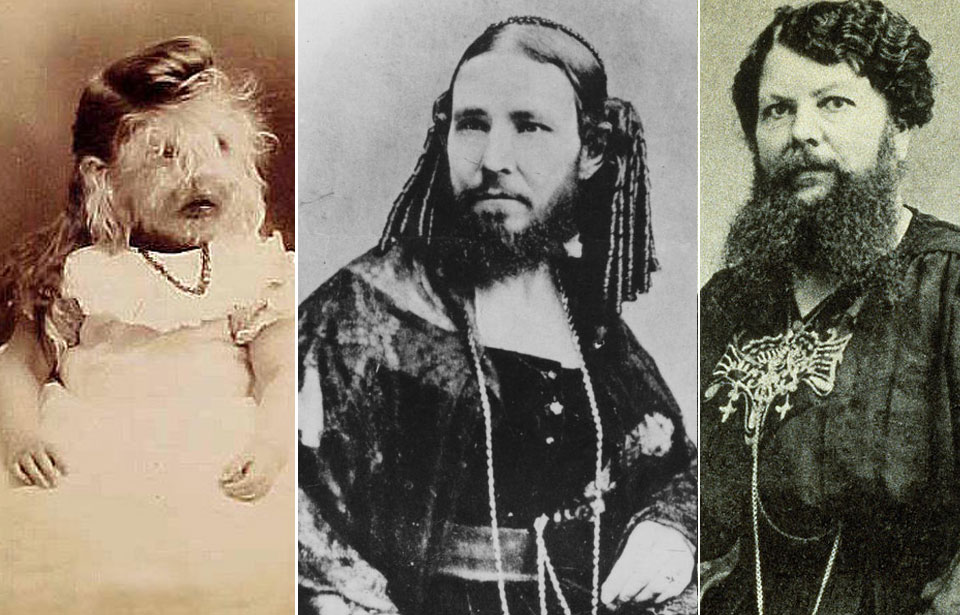Hirsutism is the condition where people have excessive hair growth in various places across their body. Hypertrichosis is where hair grows all over the body. Both can result in “a bearded lady.”
While history has details on only a few bearded ladies before the 19th century, the increased popularity of circuses and “freak shows” during the 19th and 20th centuries meant that more people took note of bearded women. Here, we take a look back at the most famous bearded women in history. Some of them saw their condition as a curse while others saw it as a way to gain fame and fortune.
Saint Wilgefortis or Saint Uncumber
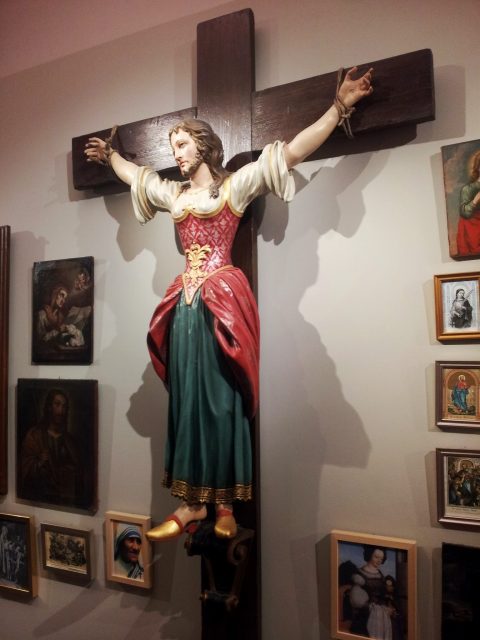
(Photo Credit: Gugganij – CC BY-SA 3.0, via Wikimedia Commons)
The first recorded bearded woman may not have existed at all.
The legend goes that Wilgefortis was a young noblewoman who, in an effort to avoid an unwanted marriage, took a vow of virginity and prayed to become repulsive. When she sprouted a beard, the wedding was called off, but her father was so furious that he had her crucified.
Saint Wilgefortis was a popular saint in the Middle Ages, prayed to by wives wishing to be “disencumbered” from their abusive husbands. But it was theorized in the late 16th century that she never existed at all. It was argued that pictures of Jesus on the cross sporting a beard but also wearing a full-length tunic rather than a loincloth led people to think it was a woman being crucified. So the legend of Wilgefortis was dreamed up to explain who this mysterious woman was.
Magdalena Ventura, born c.1579
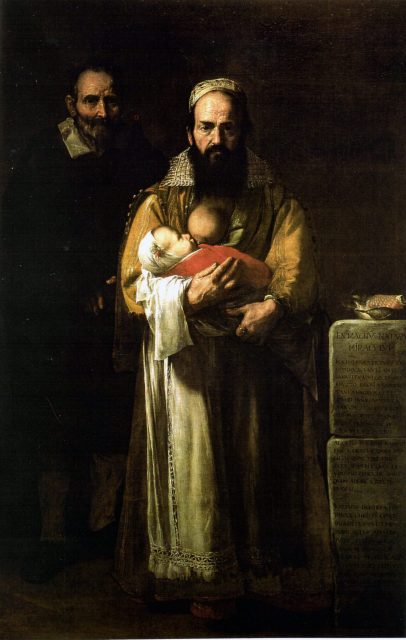
Unlike other bearded ladies, Magdalena’s facial hair didn’t start to sprout until she was thirty-seven years old. By that time, she’d given her husband three sons.
In 1631, the Duke of Alcalá commissioned a painting of “the Bearded Lady of Abruzzi.” He was fond of paintings of unusual subjects, and Magdalena very much takes center stage in the portrait. The website Artble describes the painting as follows:
“This is one case where pictures certainly speak louder than words, because as anyone can tell at a glance, Magdalena Ventura was far from a typical wife and mother: the unfortunate woman sports a beard even longer and more luxurious than that of her husband, who gazes forlornly at the viewer from the murky, shadowy background.”
When the painting was commissioned, Magdalena’s sons were fully grown and she was fifty-two years old. But Artble suggests that the inclusion of the infant (and the exposed breast for it to feed from) serve to emphasize Magdalena’s femininity.
Josephine Clofullia, born 1829
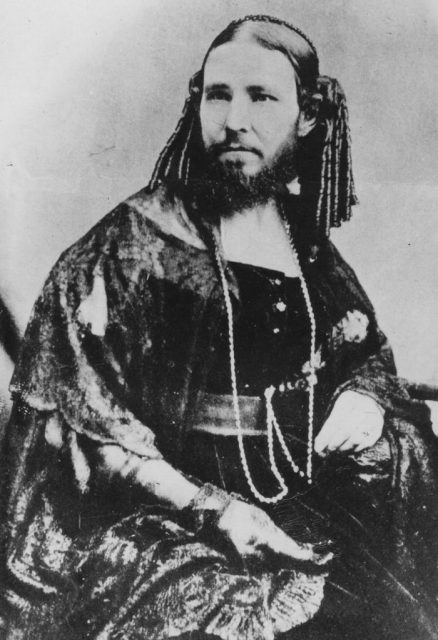
When Josephine Bolsdechêne was eight years old, her beard was already two inches long. She began touring with her father at the age of fourteen, and it was during this time that she met and married Fortune Clofullia in Paris.
With her son, husband, and father, Josephine moved to the United States where she joined PT Barnum’s American Museum. Barnum named her the Bearded Lady of Geneva and Madame Clofullia.
In 1853, rumors began to circulate that Josephine was actually a man. This resulted in her being examined by doctors who pronounced that she was, indeed, a woman. There were suspicions that Barnum himself had started the rumors as part of a publicity stunt.
Julia Pastrana, born 1834
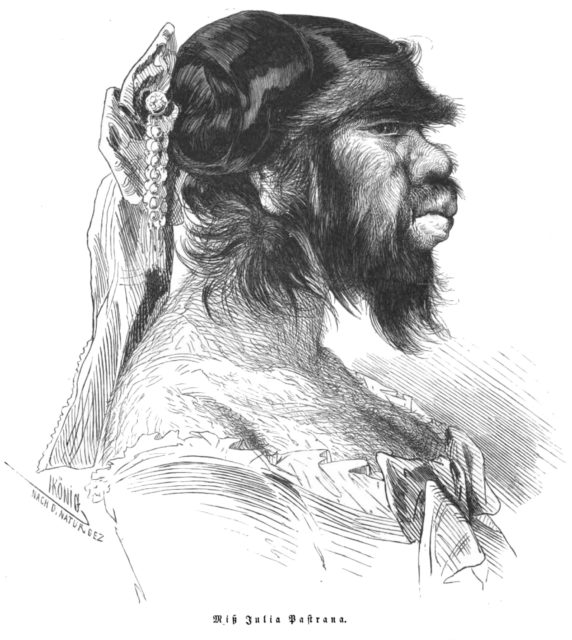
The truth of Julia’s early life is mixed up in different accounts ranging from belonging to a Native American tribe to being a “wolf girl” from a village in Mexico.
Because Julia suffered from hypertrichosis rather than hirsutism, not only her face but also her body was covered with straight black hair. After being purchased and brought to the United States, Julia eloped with Theodore Lent in 1854. After their marriage, he became her manager.
Her stage names were less than flattering: Baboon Lady, Dog-faced Woman, Bear Woman, and The Nondescript. But despite these animalistic titles, Julia would sing, dance, and interact with the audience during her performance, impressing them with her intelligence and wit.
She died giving birth to a son. Both Julia’s body and that of her son were loaned to Moscow University where they were preserved in such a manner that Lent could continue touring with them. They survived long after he himself died, although the baby’s body was damaged by vandals in 1976. Eventually, in 2012, Julia’s body was buried near her birthplace. Hundreds of people attended her funeral, which was also filmed by Eva Aridjis for her documentary Chuy, The Wolf Man.
Jane Barnell, born 1871
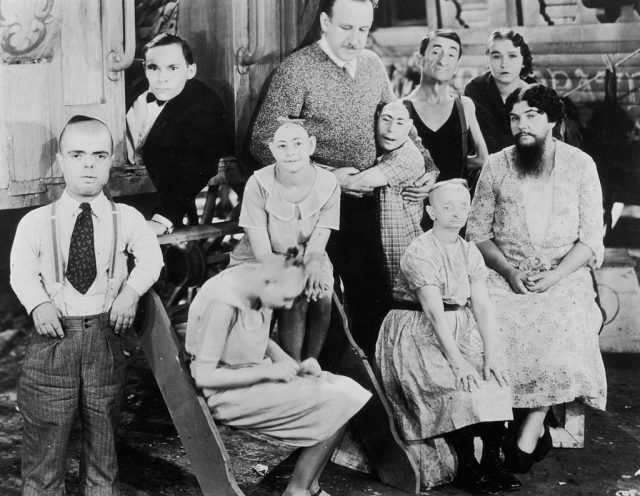
Jane Barnell was sold to a circus by her mother when she was four years old. Her father rescued her when she was five and she went to live with her grandmother. She shaved to try and disguise her condition.
Inspired by stories of Florence Nightingale, she trained to become a nurse, but an unpleasant incident made her realize a normal life was not possible. In 1892, she joined John Robinson’s Circus, choosing a stage name of Lady Olga Roderick.
Her married life was complicated. First, she married a circus musician and had two children, but her husband and children died several years later. Her second husband (a balloonist) was killed a few months after her marriage, and she divorced her third husband when he turned out to be an alcoholic. She finally found happiness with her fourth husband who also happened to be her manager.
Annie Jones, born 1865
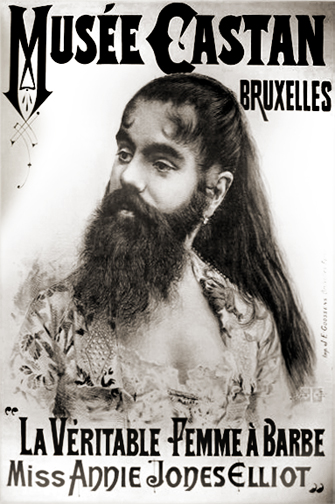
Another member of PT Barnum’s circus, American-born Annie Jones was exhibited by Barnum from nine months old. In return, her parents received $150 a week. She posed for many photographs and became the country’s top bearded lady.
She used her fame to become a spokesperson for Barnum’s living exhibits, trying to get the word “freaks” banned from being used in showbusiness.
At one point in her childhood, Annie was kidnapped by a New York phrenologist and found being exhibited at a church fair. The kidnapper claimed she was his child and the matter went to court. In a smart move, the judge had Annie separated from everyone else and brought in alone. Once inside, she headed straight for her parents and the judge declared the case closed. As with Josephine Clofullia, there were rumors that this was part of an elaborate publicity stunt by Barnum.
Clémentine Delait, born 1865
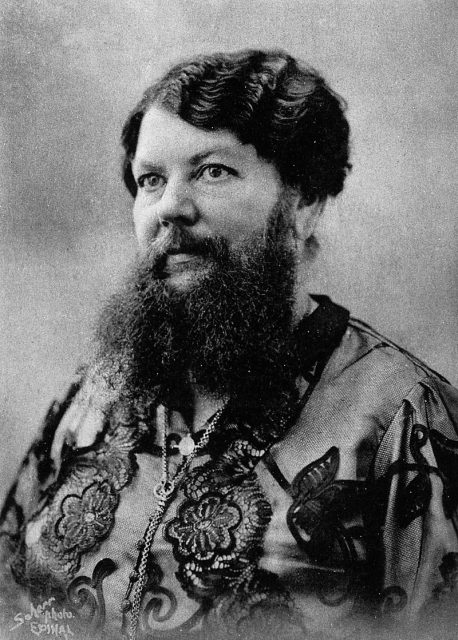
Described as “the most illustrious and celebrated bearded lady in France,” Clémentine married Paul Delait, a baker, and opened a café with him. To begin with, she shaved regularly. But after seeing a bearded lady at a carnival, Clémentine stated that she could grow a better beard than that, and her husband laid down a bet.
The incident attracted so many customers to the café that they renamed it “The Café of the Bearded Woman.” She sold postcards and pictures of herself and even began touring. In 1904, she received permission to wear men’s clothes at a time when it was illegal for women to do that.
She employed a barber, Charles Grossier, to wash and trim her beard three times a week. Grossier claimed that she would “watch him like a hawk” around her most valuable feature.
Krao Farini, born c.1876
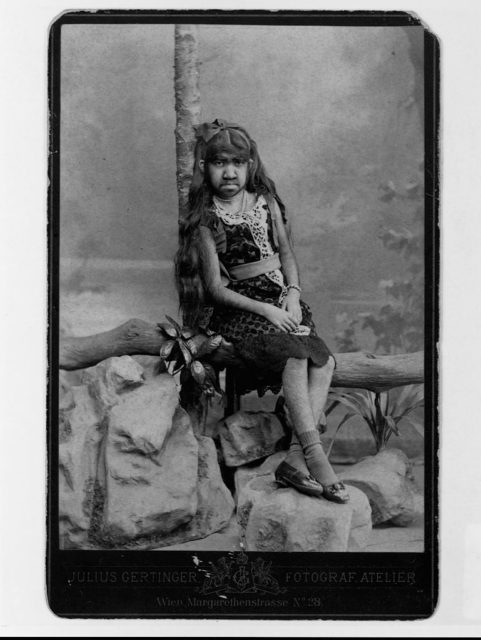
When Krao arrived in London in October 1882, she was accompanied by an anthropologist named Dr. George Shelly and the explorer Carl Bock. There are several accounts of how she came to be with them, making it impossible to distinguish the truth of her early life. But once she was in Europe, she was adopted by Guillermo Antonio Farini, a showman also known as The Great Farini.
Suffering from hypertrichosis, Krao was exhibited as “the missing link” and proof of Darwin’s theory of evolution. Over the next few decades, she was exhibited in both Europe and America. When she passed away in 1926, she requested that her body was cremated – no doubt so she could avoid the fate of her corpse being gawped at, like Julia Pastrana.
Alice Elizabeth Doherty, born 1887
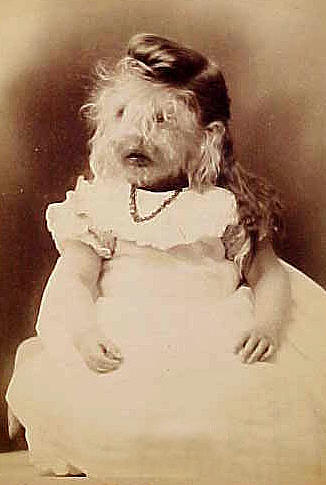
When Alice was born, she already had two-inch long blonde hair all over her body. She was billed as The Minnesota Woolly Baby. When she was five years old, her hair was five inches long, increasing to nine inches by the time she was a teenager.
While some sufferers of hypertrichosis embraced their roles as exhibits, Alice’s displays were much quieter. She only put herself on display to support her family, and she happily retired in 1915 in financial comfort.
Alice never joined the circus but was displayed as a stand-alone exhibit in storefront exhibitions. Her parents would rent commercial space in a prime location, sell tickets for people to see her, and then move on to another location.
More from us: 9 Circus Facts That Perfectly Explain These Unsettling and Eye-Catching Vintage Photos
Those who saw Alice commented she was “as frolicsome as a kitten” and “the most miraculous baby ever born.”
